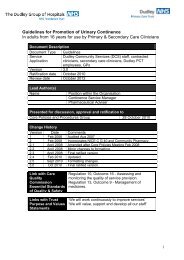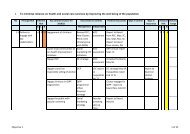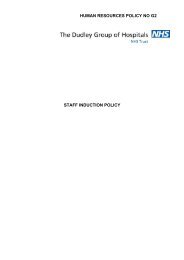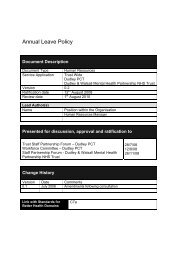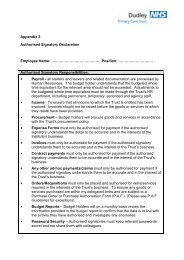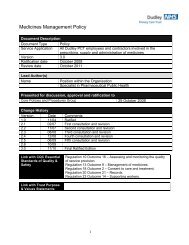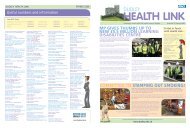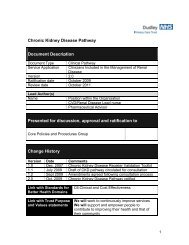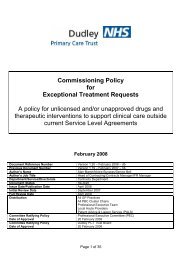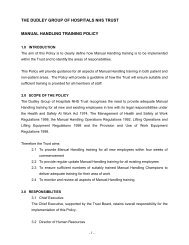Dudley Strategy for Tackling Health Inequalities 2010-15
Dudley Strategy for Tackling Health Inequalities 2010-15
Dudley Strategy for Tackling Health Inequalities 2010-15
- No tags were found...
You also want an ePaper? Increase the reach of your titles
YUMPU automatically turns print PDFs into web optimized ePapers that Google loves.
“reduce smoking during pregnancy to 11% by 20<strong>15</strong>In <strong>Dudley</strong> smoking prevalence at time of delivery reduced from 17% in 2005 to <strong>15</strong>%in 2009 then rose again in <strong>2010</strong> to 17%. (DGH, <strong>2010</strong>). However data from thePerinatal and Infant Mortality programme, shows <strong>Dudley</strong> to have a prevalence of9.5% at delivery <strong>for</strong> 2009 and 5.7% <strong>for</strong> <strong>2010</strong> (Q1&Q2), with <strong>Dudley</strong> achieving thehighest smoking cessation rates across the West Midlands. This data collection wasfunded by the NHS West Midlands „Investing <strong>for</strong> <strong>Health</strong>‟ programme and collectsroutine data from maternity handheld records, including smoking status at booking,delivery and smoking cessation rates, on a case by case basis. The aim is tounderstand the key reasons why perinatal and infant mortalities occur, and developearly interventions which will reduce their incidence. This data is audited regularlyand shows good quality case ascertainment and data collection. Work is ongoing inpartnership with Midwifery Services to understand the reasons <strong>for</strong> the data variationsbetween the two methods and improve data quality and reporting.Overall smoking prevalence in England has decreased from 28% in 1998 to 21% in2008, with 21% of men and 20% of women reporting smoking (NICE, 2008b).However, prevalence of smoking amongst people in the routine and manual socioeconomicgroup continues to be greater than amongst those in the managerial andprofessional group 26% and <strong>15</strong>% respectively in 2007. In 2008 the prevalence in theroutine and manual group rose slightly to 28% (ONS, <strong>2010</strong>) highlighting there is stillmore to be done to achieve the <strong>2010</strong> Public Service Agreement on smoking to:“reduce adult smoking rates to 21% or less by <strong>2010</strong>, with a reduction in prevalenceamong routine and manual groups to 26% or less”The overall smoking prevalence <strong>for</strong> <strong>Dudley</strong> as determined by the <strong>Dudley</strong> <strong>Health</strong>Survey 2009 is 18.5% (<strong>Dudley</strong> PCT, 2009b). Whilst the overall smoking prevalenceis lower than the national average, and has fallen from 21% in 2004 it variessignificantly with ward area, social deprivation, age, and gender.Smoking Prevalence by Ward AreaTable 1 shows smoking prevalence by ward in <strong>Dudley</strong>. The wards with smokingprevalence higher than both the national and local average in bold type are BrierleyHill (26%) closely followed by Castle and Priory, St Andrews, Quarry Bank andCradley (25%), Coseley West (24%), St Thomas (23%), Lye and Wollescote,Brockmoor and Pensnett and Gornal Wood (22%). Wall Heath and Kingswin<strong>for</strong>dNorth has the lowest prevalence at 9%.93




